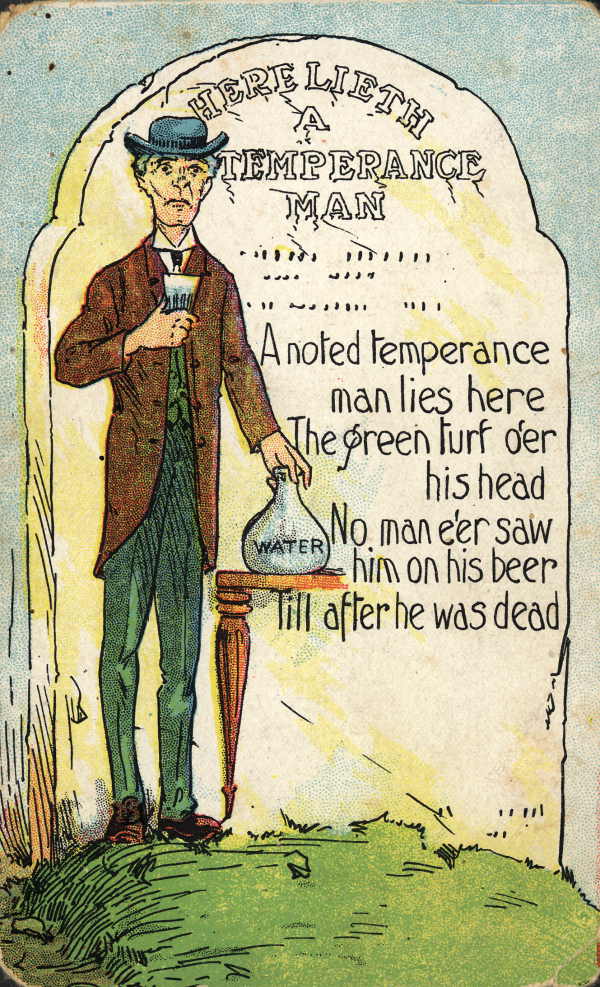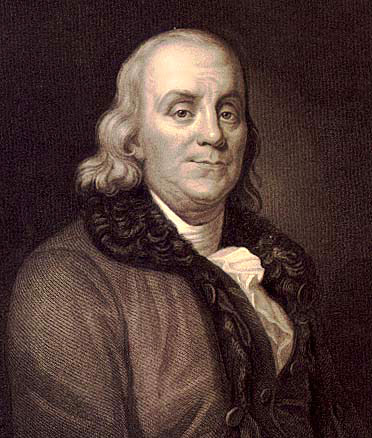
Editor’s Note: This a guest post from Steven Kotler, author of The Rise of Superman.
Researchers define flow as an “optimal state of consciousness,” a peak state where we feel our best and perform our best. Some of us know this state by other names—runner’s high or being in the zone or being unconscious—but whatever the lingo, the experience is unforgettable.
If you’ve ever lost an afternoon to a great conversation or gotten so involved in a work project that all else was forgotten, then you’ve tasted this experience. Inflow, we are so focused on the task at hand that everything else falls away. Action and awareness merge. Time flies. Self vanishes. All aspects of performance go through the roof.
We call this experience flow because that is the sensation conferred. Inflow, every action, each decision, leads effortlessly, fluidly, seamlessly to the next. It’s high-speed problem solving; it’s being swept away by the river of ultimate performance.
“Without the flow state,” explains skateboarding legend Danny Way, “without that enhanced focus, there would be no stepping up my game—that state is the foundation of stepping up the game.”
150 years of research backs up such claims. A 10-year McKinsey study, for example, found top executives are 5 times—i.e. 500 percent—more productive inflow. In studies run by the U.S. military, snipers in flow learned between 200-500 percent faster than normal. Creativity gets a 7x boost. And this list goes on.
Yet there’s a rub. The flow might be the most desirable state on earth, but it’s also the most elusive. While seekers have spent centuries trying, no one has found a reliable way to reproduce the experience, let alone with enough consistency to radically accelerate performance. The one group of people for whom this is not the case is with action and adventure sports athletes.
In fact, so good have these athletes become at harnessing flow that, over the course of the past 25 years, they have utilized the state to push the limits of the possible faster and farther than ever before in history. In this evolutionary eye-blink, in sports like surfing, skiing, skateboarding, rock climbing, mountain biking, etc., athletes have achieved staggering, near-exponential growth in ultimate human performance—when life or limb is on the line. Surfers are riding 100-foot waves, snowboarders are doing aerials that weren’t thought possible, and rock climbers are soloing cliffs with no ropes that no human should be able to do.
Nothing like this has ever happened before. So the question is, why is it happening now?
The answer is actually quite simple. In all other activities flow is a luxury, but at the upper edges of action/adventure sports, a fundamental necessity. The state is the only reason these athletes are surviving the big mountains, big waves, and big rivers. When you’re pushing the limits of ultimate human performance, the choice is stark: it’s a flow or dies.
Alongside the other researchers at the Flow Research Collective, I have spent the past 15 years working with these action and adventure sports athletes to figure out what they’re doing to harness flow so successfully and how to apply this information in all domains in society.
And that’s exactly what I’m going to cover in this post
A Brief Introduction To Flow Hacking
Flow states have triggers—i.e., pre-conditions that lead to more flow. There are 15 in total and they fall into four categories–psychological, environmental, social, and creative. We’ll go into greater detail below, but there are two things to know right off the bat.
First, flow follows focus. It is a state of total absorption. Thus, all 15 of these flow triggers are ways of heightening and tightening attention.
Second, the reason today’s action and adventure sports athletes are getting into the flow so successfully is that they’ve built their lives around the state. They’ve packed their lives with all 15 of these triggers.
Environmental Triggers
Environmental triggers—a.k.a. “external triggers” are qualities in the environment that drive people deeper into the zone.
High consequences are the first trigger. When there’s danger lurking in the environment, we don’t need to concentrate extra hard to drive focus, the elevated risk levels do the job for us. Since survival is fundamental to any organism, our brain’s first priority is to scour all incoming information for any sign of a threat and focus intently upon it.
To hack the “high consequence” flow trigger, remember that risk is always relative. While some danger must be courted for flow, confrontations with mortality are not required. In fact, even physical risk itself is optional. Take intellectual risks, social risks, creative risks, emotional risks. A shy man need only cross the room to say hello to an attractive woman to trigger this rush. In casual conversation, merely telling someone the truth can serve the same purpose. “To reach flow,” explains Harvard psychiatrist Ned Hallowell, “one must be willing to take risks. The lover must lay bare his soul and risk rejection and humiliation to enter this state. The athlete must be willing to risk physical harm, even loss of life, to enter this state. The artist must be willing to be scorned and despised by critics and the public and still push on. And the average person—you and me—must be willing to fail, look foolish, and fall flat on our faces should we wish to enter this state.”
A rich environment, the next environmental trigger, is a combination platter of novelty, unpredictability, and complexity—three elements that catch and hold our attention much like risk. Novelty means both danger and opportunity. To our forbearers, a strange scent in the wind could be prey or predator, but either way, it paid to pay attention. Unpredictability means we don’t know what happens next, thus we pay extra attention to what happens next. Complexity, when there’s lots of salient information coming at us at once, does more of the same.
Action and adventure athletes taste these experiences so often because nature is jam-packed with novelty, unpredictability, and complexity. Rivers are living entities. Same with the mountains and the waves. In places where anything can happen, a wandering mind is a dangerous mind, thus rich environments automatically tighten the focus and drive flow.
And for those of us who want to take advantage of this fact, yet have no interest in action and adventure sports? Simple: Seek out complexity, especially in nature. Go stare at the night sky. Walk in the woods. If you can’t find big nature, contemplate the small. The reason there are so many clichés about universes inside of dew drops is that there are universes inside of dew drops. No dew to contemplate? Use technology to induce awe: surf your city with Google Earth or go see an IMAX movie.
Deep embodiment is a kind of total physical awareness. Fifty percent of our nerve endings reside in our hands, feet, and face. We have five major senses. We also have proprioception to detect our body’s position in space, and vestibular awareness to help us maintain our balance.
“Action and adventure sports demand deep embodiment,” says professional kayaker Doug Ammons. “Especially kayaking. Big rivers accelerate you in every direction at once. This puts the vestibular system into overdrive. This isn’t just your mind paying more attention—suddenly your entire body is paying attention. When this happens, it’s outside our conscious capabilities. There are no words… You are literally part of the flow of the world.”
If we want to pull the deep embodiment trigger in less extreme environments, then we simply have to learn to pay attention to all these input streams in those environments. This isn’t hard. Zen walking meditation teaches open-senses/all-senses awareness. Balance and agility training (like playing hopscotch or running ladder drills) enhance proprioception and vestibular awareness. Yoga, Tai Chi, and just about every martial art blend both together. And if the technology is more your speed, there are video games for both Xbox’s Kinect and Nintendo’s Wii that do the same.
Psychological Triggers
Psychological, or internal triggers, are conditions in our inner environment that create more flow. They’re psychological strategies for driving attention into the now.
Back in the 1970s, pioneering flow researcher Mihaly Csikszentmihalyi identified clear goals, immediate feedback, and the challenge/skills ratio as the three most critical. Let’s take a closer look.
Clear goals, our first trigger, tell us where and when to put our attention. When goals are clear, the mind doesn’t have to wonder about what to do or what to do next—it already knows. Thus, concentration tightens, motivation heightens, and extraneous information gets filtered out. Action and awareness start to merge, and we’re pulled even deeper into now. Just as importantly, in the now, there’s no past or future and a lot less room for self—which are the intruders most likely to yank us to the then.
This also tells us something about emphasis. When considering “clear goals,” most have a tendency to skip over the adjective (clear) to get to the noun (goals). When told to set clear goals, we immediately visualize ourselves on the Olympic podium, the Academy Award stage, or the Fortune 500 list, saying, “I’ve been picturing this moment since I was 15,” and think that’s the point.
But those podium moments can pull us out of the present. Even if success is seconds away, it’s still a future event subject to hopes, fears, and all sorts of now-crushing distraction. Think of the long list of infamous sporting chokes: the dropped pass in the final seconds of the Superbowl; the missed putt at the end of the Augusta Masters. In those moments, the gravity of the goal pulled the participants out of them now, when, ironically, the now was all they needed to win.
If creating more flow is the aim, then the emphasis falls on “clear” and not “goals.” Clarity gives us certainty. We know what to do and where to focus our attention while doing it. When goals are clear, meta-cognition is replaced by in-the-moment cognition, and the self stays out of the picture.
Applying this idea in our daily life means breaking tasks into bite-size chunks, and setting goals accordingly. A writer, for example, is better off trying to pen three great paragraphs at a time, rather than attempting one great chapter. Think challenging, yet manageable—just enough stimulation to shortcut attention into the now, not enough stress to pull you back out again.
Immediate feedback, our next internal trigger, is another shortcut into the now. The term refers to a direct, in-the-moment coupling between cause and effect. As a focusing mechanism, immediate feedback is something of an extension of clear goals. Clear goals tell us what we’re doing; immediate feedback tells us how to do it better.
If we know how to improve performance in real-time, the mind doesn’t go off in search of clues for betterment; we can keep ourselves fully present and fully focused and thus much more likely to be inflow.
Of course, for action and adventure athletes, getting the feedback they need is automatic. As National Outdoor Leadership School (NOLS) founder Paul Petzoldt once said: “In the mountains, feedback is instant.” Same with the rivers, rocks, and oceans. In these environments, the laws of physics deliver instantaneous, unmediated feedback. No judges, no scorecards, no review in the New York Times. Just cause and effect.
This built-in feedback is another reason extreme athletes have found flow so frequently, but if we’re interested in pulling this trigger without help from the laws of physics? No mystery here. Tighten feedback loops. Put mechanisms in place so attention doesn’t have to wander. Ask for more input. How much input? Well, forget quarterly reviews. Think daily reviews. Studies have found that in professions with less direct feedback loops—stock analysis, psychiatry, medicine—even the best get worse over time. Surgeons, by contrast, are the only class of physicians that improve the longer they’re out of medical school. Why? Mess up on the table and someone dies. That’s immediate feedback.
The challenge/skills ratio, the last of our internal flow triggers, is arguably the most important. The idea behind this trigger is that attention is most engaged (i.e., in the now), when there’s a very specific relationship between the difficulty of a task and our ability to perform that task. If the challenge is too great, fear swamps the system. If the challenge is too easy, we stop paying attention. Flow appears near the emotional midpoint between boredom and anxiety, in what scientists call the “flow channel”—the spot where the task is hard enough to make us stretch; not hard enough to make us snap.
This sweet spot keeps attention locked in the present. When the challenge is firmly within the boundaries of known skills—meaning I’ve done it before and am fairly certain I can do so again—the outcome is predetermined. We’re interested, not riveted. But when we don’t know what’s going to happen next, we pay more attention to the next. Uncertainty is our rocket ride into the now.
Social Triggers
There is also a collective version of a flow state known as “group flow.” This is what happens when a bunch of people enters the zone together. If you’ve ever seen a fourth-quarter comeback in football, where everyone is always in the right place at the right time and the result looks more like a well-choreographed modern dance than anything that normally happens on the gridiron—that’s group flow in action.
But it’s not just athletes who play this game. In fact, group flow is incredibly common in startups. When the whole team is driving towards a singular purpose with incredible speed—again, group flow in action.
Salim Ismail, former head of innovation at Yahoo turned Singularity University global ambassador, put it this way: “Because entrepreneurship is about the non-stop navigation of uncertainty, being in flow is a critical aspect of success. Flow states allow an entrepreneur to stay open and alert to possibilities, which could exist in any partnership, product insight, or customer interaction. The more flow created by a startup team, the higher the chance of success. In fact, if your startup team is not in a near-constant group flow state, you will not succeed. Peripheral vision gets lost and insights don’t follow.”
So how to precipitate group flow? This is where social triggers come into play. These triggers are ways to alter social conditions to produce more group flow. A number of them are already familiar. The first three—serious concentration; shared, clear goals; good communication (i.e., lots of immediate feedback)–are the collective versions of the psychological triggers identified by Csikszentmihalyi.
Two more: equal participation and an element of risk (mental, physical, whatever), are self-explanatory given what we already know about flow. The remaining five require a little more information.
Familiarity, our next trigger, means the group has a common language, a shared knowledge base, and a communication style based on unspoken understandings. It means everybody is always on the same page, and, when novel insights arise, momentum is not lost due to the need for lengthy explanation.
Then there are blending egos—which is kind of a collective version of humility. When egos have been blended, no one’s hogging the spotlight and everyone’s thoroughly involved.
A sense of control combines autonomy (being free to do what you want) and competence (being good at what you do). It’s about getting to choose your own challenges and having the necessary skills to surmount them.
Close listening occurs when we’re fully engaged in the here and now. In conversation, this isn’t about thinking about what witty thing to say next, or what cutting sarcasm came last. Rather, it’s generating real-time, unplanned responses to the dialogue as it unfolds.
“Always say yes,” our final trigger, means interactions should be additive more than argumentative. The goal here is the momentum, togetherness, and innovation that comes from ceaselessly amplifying each other’s ideas and actions. It’s a trigger based on the first rule of improv comedy. If I open a sketch with, “Hey, there’s a blue elephant in the bathroom,” then “No, there’s not,” is the wrong response. With the denial, the scene goes nowhere. But if the reply is affirmative, “Yeah, sorry, there was no more space in the cereal cupboard,” then that story goes someplace interesting.
Creative Triggers
Creativity. If you look under the hood of creativity, what you see is pattern recognition (the brain’s ability to link new ideas together) and risk-taking (the courage to bring those new ideas into the world). Both of these experiences produce powerful neurochemical reactions and the brain rides these reactions deeper into the flow.
This means, for those of us who want more flow in our lives, we have to think different, simple as that. Instead of tackling problems from familiar angles, go at them backward and sideways and with style. Go out of your way to stretch your imagination. Massively up the amount of novelty in your life—the research shows that new environments and experiences are often the jumping-off points for new ideas (more opportunity for pattern recognition). Most importantly, make creativity a value and a virtue.
This is exactly what action and adventure sports athletes did. Professional climber, skier, photographer, and filmmaker Jimmy Chin explains: “When people think about action and adventure sport athletes the first thing—often the only thing—they think about is the physical risk involved. But I’ve gotten to know and work with an extremely diverse group of these athletes—from new school freeskiers through grizzled 8,000-meter-peak mountaineering veterans—and I’ve come to one conclusion about everyone, myself included. The greatest athletes aren’t interested in the greatest risks. I mean, sometimes they’re taken, sometimes not, but those physical risks are a by-product of a much deeper desire to take creative risks. Don’t be fooled by the danger. Inaction and adventure sports, creativity is always the point.”
___________________________________
Steven Kotler is a New York Times bestselling author, award-winning journalist, and co-founder and director of research for the Flow Genome Project. His most recent book The Rise of Superman.







